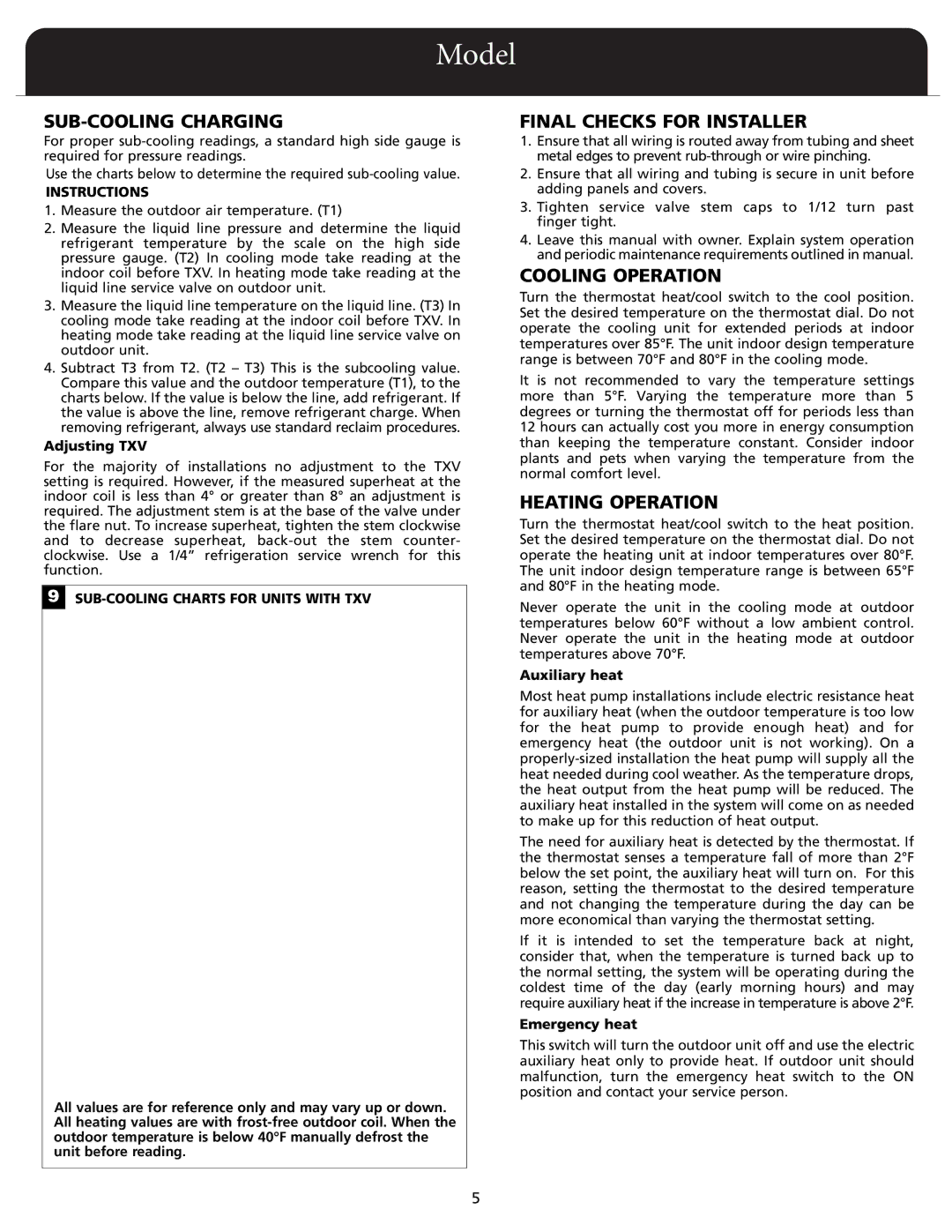CH18ABD1 specifications
The Fedders CH18ABD1 is a powerful and efficient air conditioning unit that is designed for residential and light commercial applications. This model is particularly popular for its ability to deliver rapid cooling and heating, making it an ideal choice for various climates and seasonal changes.One of the standout features of the Fedders CH18ABD1 is its robust 18,000 BTU cooling capacity. This allows it to efficiently cool large spaces, making it suitable for medium to large rooms. The unit also offers a heating capacity, which provides flexibility for year-round comfort. The ability to switch between cooling and heating modes allows users to enjoy a comfortable indoor environment no matter the weather outside.
The Fedders CH18ABD1 is designed with advanced technologies that enhance its efficiency and performance. A key technology is its use of a high-efficiency compressor, which significantly reduces energy consumption while maintaining effective temperature control. Additionally, this model includes a programmable thermostat that allows users to set precise temperatures and schedules, promoting energy savings and convenience.
In terms of noise levels, the Fedders CH18ABD1 operates quietly, making it suitable for settings where noise is a concern, such as bedrooms or offices. The unit’s design incorporates sound-dampening features that minimize operational sound, ensuring an unobtrusive climate control experience.
Installation and maintenance of the Fedders CH18ABD1 is relatively straightforward. The unit is designed for easy mounting in windows or through walls, providing flexibility in placement. Regular maintenance is facilitated by accessible filters that can be easily cleaned or replaced, helping sustain optimal performance over time.
Furthermore, the unit is equipped with various modes, such as fan-only and auto-restart functions. The fan mode allows for air circulation without cooling, while the auto-restart function ensures the unit resumes its previous settings after a power outage.
In summary, the Fedders CH18ABD1 stands out for its powerful cooling and heating capabilities, advanced efficiency technologies, and user-friendly features. Its flexible operation, quiet performance, and ease of maintenance make it a reliable choice for anyone seeking an effective and efficient air conditioning solution. This unit is an excellent investment for those aiming to maintain a comfortable living environment throughout the year.

